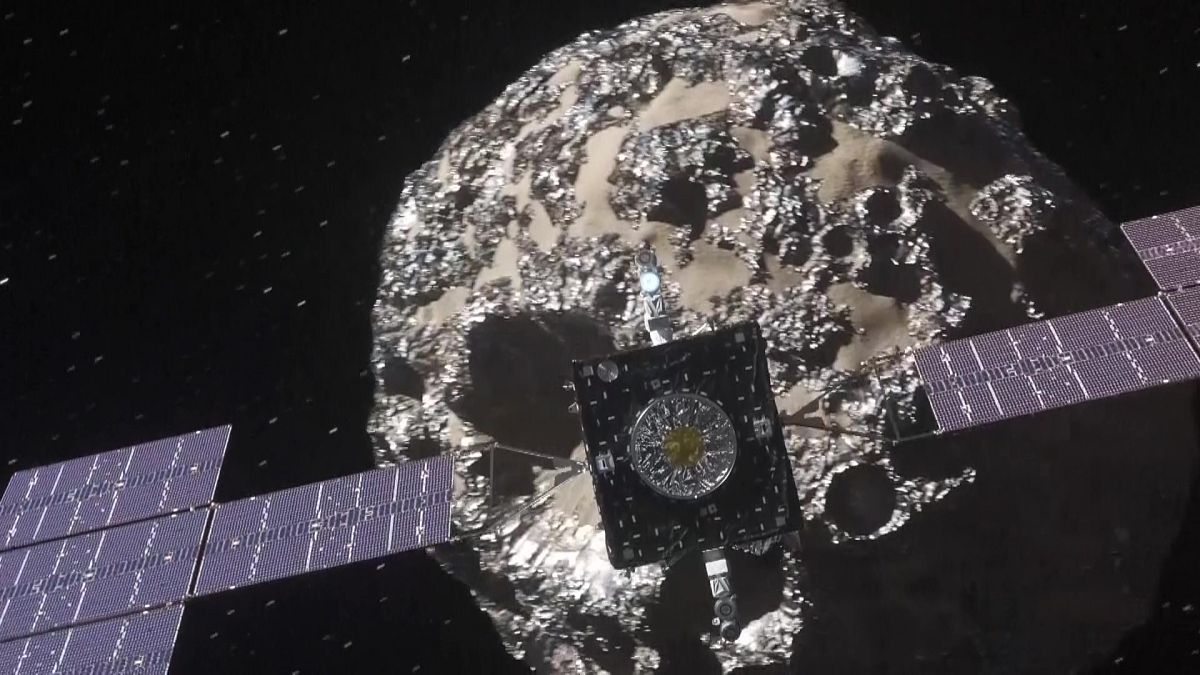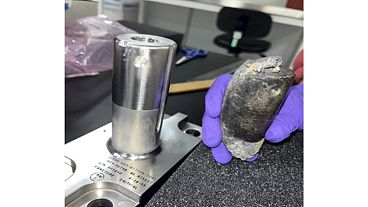NASA's latest deep space mission will analyse a metal-rich asteroid to unlock a greater understanding of how rocky planets like our own were formed.
NASA is gearing up for its latest research endeavour with a specially-designed spacecraft set for launch this week on an extraordinary mission to explore the enigmatic metal-rich asteroid Psyche.
Psyche - the 16th asteroid ever to be discovered in 1852 - orbits in the outer region of the main asteroid belt between Mars and Jupiter.
The giant asteroid has never been visited before and is expected to offer a glimpse into the core of the Earth, how it was formed and more about our solar system's history.
"Psyche gives us the opportunity to visit a core the only way that humankind can ever do, and so we hope to learn something about what's inside the Earth and other rocky planets by visiting Psyche," Lindy Elkins-Tanton, Psyche's Principal Investigator, said.
When will NASA launch the spacecraft?
NASA plans to mount the Psyche spacecraft onto a SpaceX Falcon Heavy rocket on Thursday at Launch Complex 39A at Kennedy Space Center in Florida, the US, after optimising the trajectory for the mission and making some fine-tuning adjustments.
According to the space agency, Psyche’s journey through space will last nearly six years and about 3.6 billion km before finally reaching the asteroid, which is scheduled to take place in 2029.
What are the aims of NASA’s latest mission?
The mission aims to map the 279-kilometre-wide asteroid's surface and study its unique properties.
NASA says it appears to be the exposed nickel-iron core of an early planet, the building blocks of the solar system.
Rocky planets such as the Earth, Mercury, Venus, Mars, and the Moon all have a metal core at their centre.
It's also the source of the magnetic field of the Earth, which may be tied to holding onto our atmosphere and making our planet habitable.
Due to its inaccessibility, research on the magnetic field has only been done indirectly.
"I think it's going to really surprise us and change our views about our solar system when we get there, and it's an incredible opportunity to be a part of the team making that happen," Tanton said.
To accomplish this extraordinary mission, the Psyche spacecraft has been meticulously crafted by a team of engineers.
"I've been working on this for nine years since it was just a concept on a whiteboard and it is amazing how close we are to actually getting to ship this. It feels great to be here. It also is just tremendous pressure and work because we got to make that window and we need to make sure everything works," said David Y Oh, project systems engineer for Psyche mission.
Psyche spacecraft’s design
Its body, two solar arrays, and various instruments are approximately the size of a tennis court, according to NASA.
The spacecraft's solar-electric propulsion chassis has been built by Maxar (formerly SSL) with a payload that includes an imager, magnetometer, and a gamma-ray spectrometer.
The spacecraft will also carry a Gamma-Ray and Neutron Spectrometer, a Multispectral Imager, a Magnetometer, and an X-Band radio telecommunications system.
Additionally, it will test a ground-breaking laser communication technology called Deep Space Optical Communication (DSOC), which encodes data in photons for communication between the probe and Earth.
For more on this story, watch the video in the media player above.



